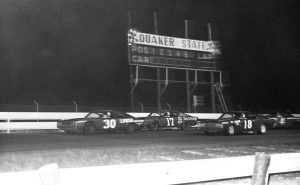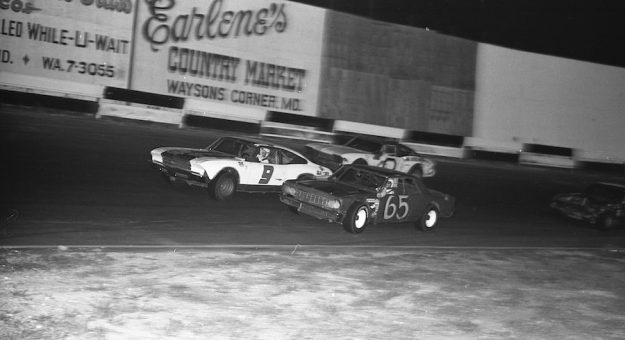Anybody who spends time driving in the Baltimore-Washington Corridor will quickly understand why motorsports and the nation’s capital are a vinegar-and-oil combination.
Both cities are ancient and were laid out during the horse-drawn era. Real estate is some of the nation’s costliest. The superhighways that link the cities are frequently jammed with high-volume traffic. Even mass transit in the region is largely maxed out.
Against that intimidating reality, it’s remarkable to consider motorsports existed in and around Washington, D.C. Much of that history is the stuff of sepia-toned photography. For instance, “Big Bill” France drove his first race in 1929 on the dirt oval in Pikesville, Md., before heading for Daytona Beach.
Board-track genius Jack Prince built one of his wooden superspeedways in Laurel, Md., which lasted a single season, ending in 1926. On the drag-racing side, Aquasco Speedway booked match races for two brawny decades that ended in 1973, and helped launch the Super Stock career of the great Malcolm Durham.

IMSA was one-and-done through Washington’s streets in 2002. IndyCar teamed with IMSA on three ill-starred runs through the streets of Baltimore that ended in 2013.
In other words, racing of any kind isn’t an easy sell in the nation’s capital. A case study exists in the tale of Beltsville Speedway, which enjoyed just shy of 15 years in business.
Beltsville had a terrific location, just off the Baltimore-Washington Parkway, itself just north of its juncture with the dreaded Washington Beltway. The area was on the very cusp of a development boom when Beltsville Speedway opened in 1965 as a home for modifieds, which formed something of a dying class in the immediate area.
Beltsville was an ambitious project, a paved half-mile oval with considerable banking, that was plopped down in the middle of all this very valuable land and for a few years, anyway, it prospered. Beltsville represented a change in local racing tastes as the modifieds gradually faded away in Maryland, and was a linchpin in NASCAR’s effort to redefine its short-track presence by running late-model bodies on its race cars.
Development pressures ultimately claimed the facility in 1978, but the track’s memory remains vivid for the quality of competition, across a variety of racing disciplines, that it consistently attracted.
Beltsville was located just off the Powder Mill Road exit of the Baltimore-Washington Parkway, about three-quarters of the distance between Baltimore and D.C. The track was built by a group of partners led by promoter Tom Lillis, with the fitting original name of Baltimore-Washington Speedway.
As an indication of what would come soon, the Beltsville site was next door to a huge research laboratory operated by the U.S. Department of Agriculture. Racing historian Larry Jendras, who grew up west of Baltimore and was a frequent Beltsville attendee, remembers that the true crush of capital residential development was still a few years away.
The track opened in July 1965 with looming NASCAR luminaries Runt Harris and Lennie Pond topping abbreviated seasons for the modified and sportsman divisions, respectively. An estimated 5,500 fans crowded in for the opening modified race, won by Sonny Hutchins of Richmond, Va.
Beltsville drew cars not only from Dorsey Speedway and Westport Stadium near Baltimore, but also from Virginia tracks such as Old Dominion Speedway in Manassas, which is still running today.
Perhaps most unusually, Beltsville’s location and the relative lack of nearby modifieds, meant the track drew a polyglot of drivers from Pennsylvania, New Jersey and New England. The rundown of the first race shows top finishes by Pennsylvania’s Joe Kelly, New Jerseyans Gil Hearne and Elton Hildreth, Long Island midget veteran Johnny Coy, and New Englanders Dennis Zimmerman and Don MacTavish.
That continued for a year until two things happened in 1966: The track changed its name to Beltsville Speedway and the modifieds were dropped as a weekly attraction. Instead, the sportsman class was upgraded to the track’s lead division and named Late Model Sportsman, with much of its rolling stock consisting of 1957 Chevrolets, 1956 Fords and the like.
